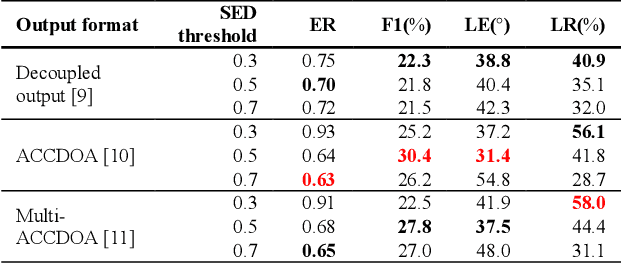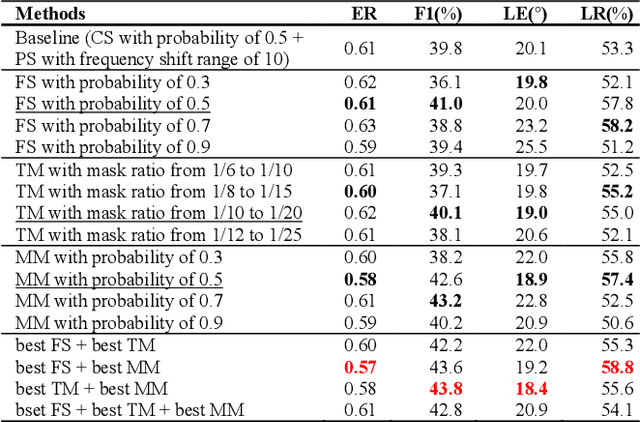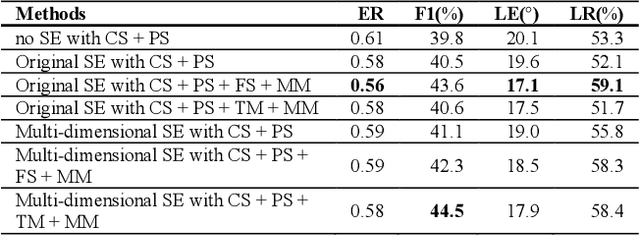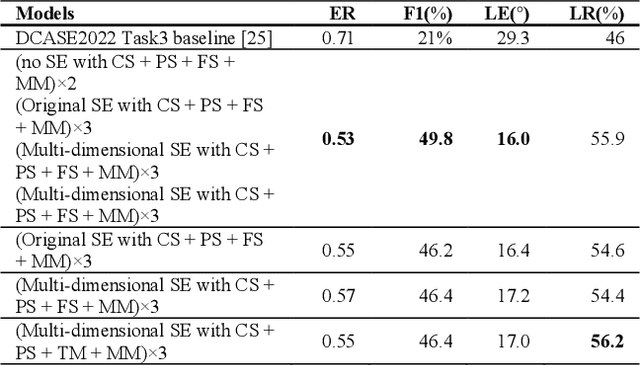Seung-Deok Choi
Data Augmentation and Squeeze-and-Excitation Network on Multiple Dimension for Sound Event Localization and Detection in Real Scenes
Jun 24, 2022



Abstract:Performance of sound event localization and detection (SELD) in real scenes is limited by small size of SELD dataset, due to difficulty in obtaining sufficient amount of realistic multi-channel audio data recordings with accurate label. We used two main strategies to solve problems arising from the small real SELD dataset. First, we applied various data augmentation methods on all data dimensions: channel, frequency and time. We also propose original data augmentation method named Moderate Mixup in order to simulate situations where noise floor or interfering events exist. Second, we applied Squeeze-and-Excitation block on channel and frequency dimensions to efficiently extract feature characteristics. Result of our trained models on the STARSS22 test dataset achieved the best ER, F1, LE, and LR of 0.53, 49.8%, 16.0deg., and 56.2% respectively.
Frequency Dependent Sound Event Detection for DCASE 2022 Challenge Task 4
Jun 23, 2022

Abstract:While many deep learning methods on other domains have been applied to sound event detection (SED), differences between original domains of the methods and SED have not been appropriately considered so far. As SED uses audio data with two dimensions (time and frequency) for input, thorough comprehension on these two dimensions is essential for application of methods from other domains on SED. Previous works proved that methods those address on frequency dimension are especially powerful in SED. By applying FilterAugment and frequency dynamic convolution those are frequency dependent methods proposed to enhance SED performance, our submitted models achieved best PSDS1 of 0.4704 and best PSDS2 of 0.8224.
 Add to Chrome
Add to Chrome Add to Firefox
Add to Firefox Add to Edge
Add to Edge